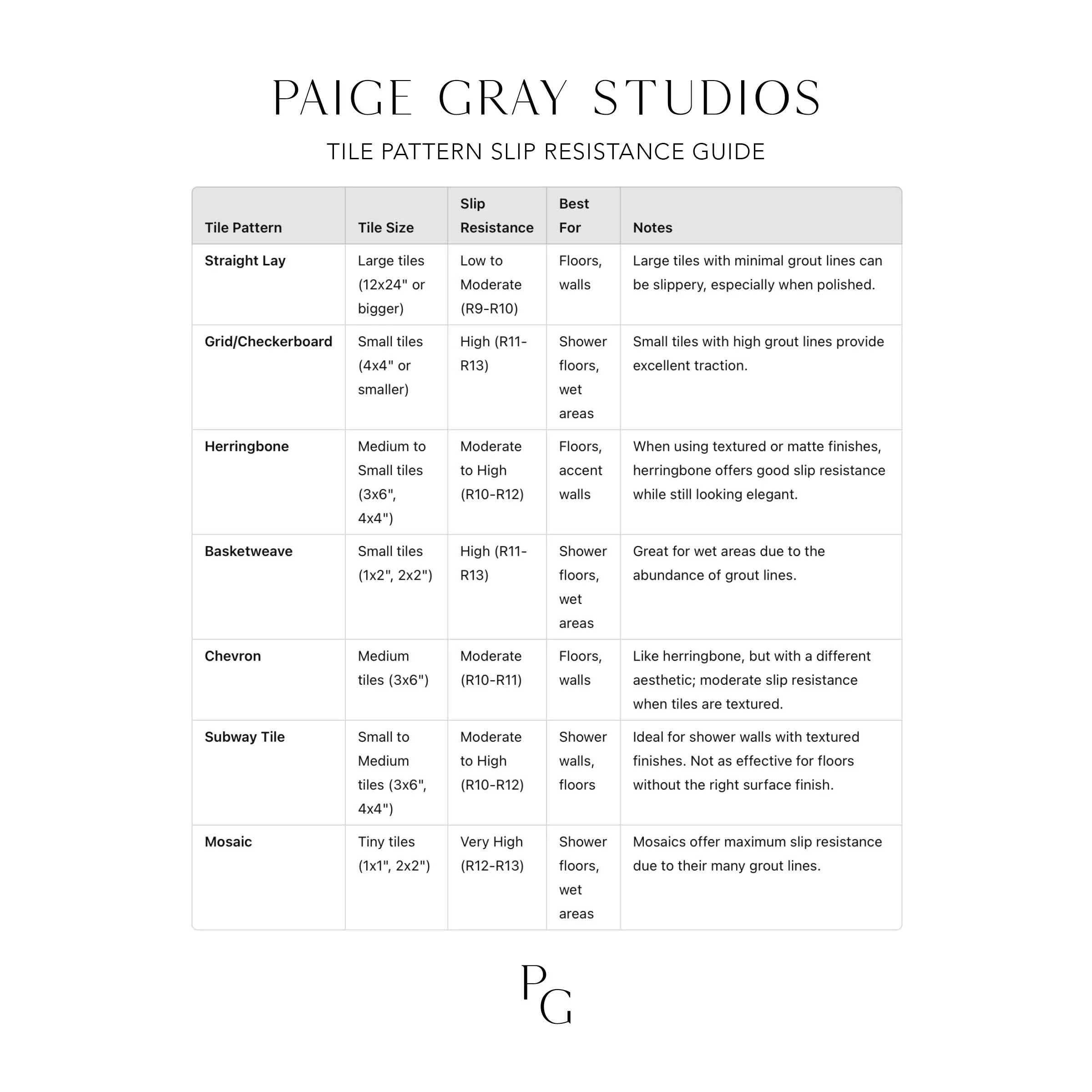EXCLUSIVE CONTENT
Complimentary Content and Design Support for Instagram Followers!
YOUR DESIGNER
Paige Gray, BA ID
Bathroom Tile Guide
When designing a bathroom, tile selection is crucial not just for the overall look but also for functionality. One of the most important factors to consider, especially for wet areas like showers and bathroom floors, is slip resistance. This guide will help you understand how to select the right tile for safety, aesthetic preferences, and longevity.
Slip Resistance Ratings: What You Need to Know
Tiles are typically rated for slip resistance based on their COF (Coefficient of Friction). A higher COF means the surface is less slippery. The most common rating system for bathroom tiles is the R-rating scale, which ranges from R9 to R13 (with R9 being the least slip-resistant and R13 the most).
R9 – Suitable for dry areas, not recommended for wet environments.
R10 – Suitable for light wet environments, but not ideal for showers or wet bathroom floors.
R11 – Suitable for moderate wet conditions, good for bathroom floors.
R12-R13 – High slip resistance, perfect for wet or commercial environments, ideal for shower floors.
Note: Tiles with a matte, textured, or honed surface tend to offer better slip resistance than polished tiles.
Smaller Tiles and Grout: A Safety Advantage
Smaller tiles are not only a design trend but also offer functional benefits, especially in wet areas. Here's why:
Increased Grout Lines: Smaller tiles have more grout lines compared to larger tiles. These grout lines create more friction, which enhances traction and minimizes the risk of slipping.
Better Drainage: In showers or wet floors, smaller tiles can help with better water drainage because the grout lines help water flow off the surface more efficiently.
Safety in Design: Opting for smaller tiles, particularly in shower areas, gives you more opportunities to create a safer environment while still achieving beautiful patterns.
Tile Materials and Slip Resistance
Different tile materials have varying levels of natural slip resistance. Understanding these differences can help you select the safest option for your bathroom:
Natural Stone (Granite, Slate, Travertine, Limestone):
Pros: These tiles have natural textures that can provide better traction, even when wet.
Cons: Some stones, like limestone or travertine, can be more porous and require sealing to prevent staining. They also can be more expensive.
Best For: High-slip resistance when honed or textured, ideal for floors.
Porcelain Tiles:
Pros: Porcelain tiles are versatile, durable, and available in various finishes.
Cons: While porcelain can be slip-resistant when textured or matte, polished porcelain has very low slip resistance.
Best For: For shower floors or areas with higher moisture, select matte or textured porcelain. Avoid polished porcelain for floors or wet areas.
Common Tile Patterns and Their Impact on Slip Resistance
Below is a chart of various common tile patterns that influence slip resistance, particularly in wet areas like showers and bathroom floors. Smaller tiles with more grout lines tend to be better for safety in slippery conditions.


